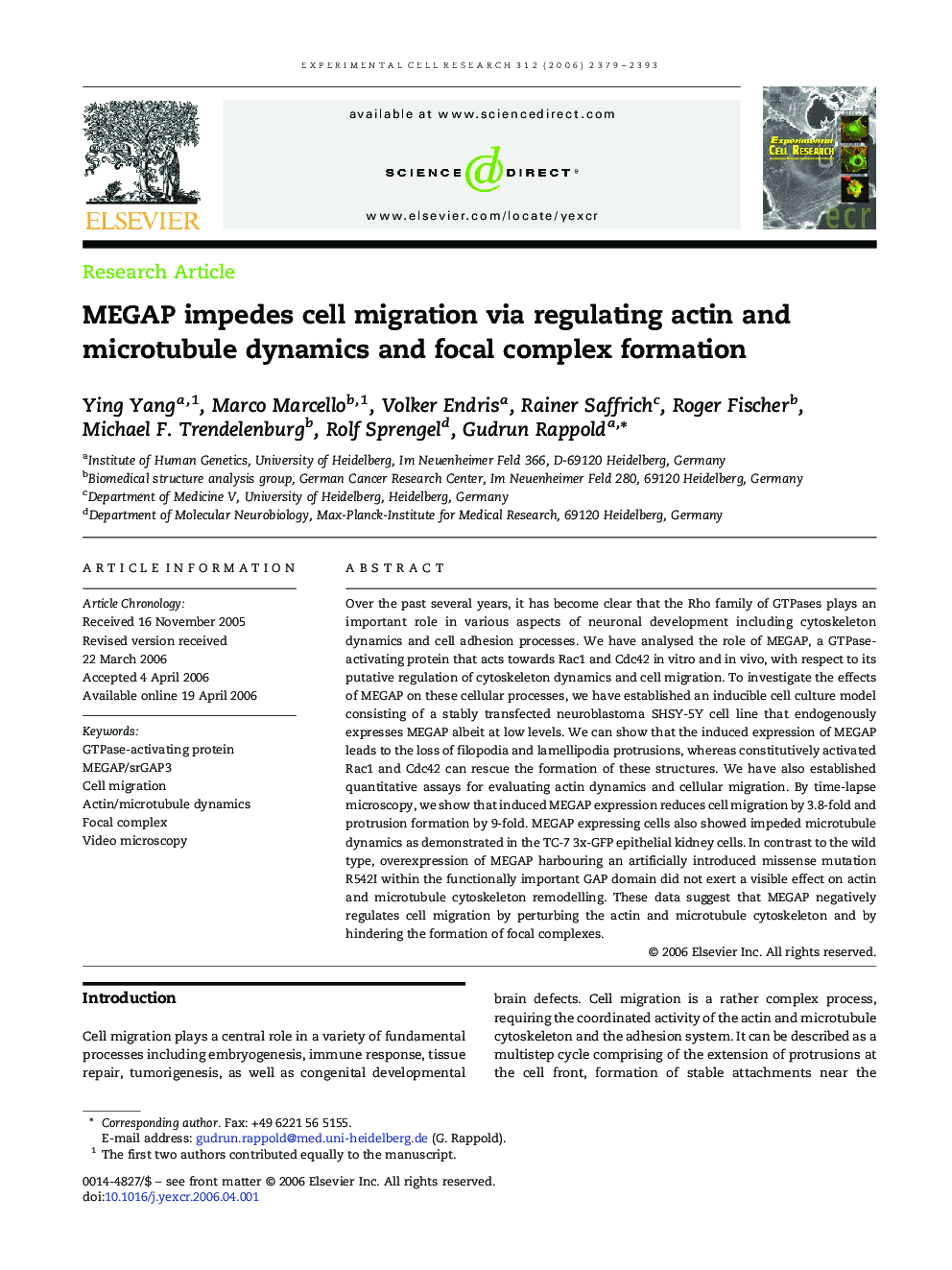| Article ID | Journal | Published Year | Pages | File Type |
|---|---|---|---|---|
| 2132985 | Experimental Cell Research | 2006 | 15 Pages |
Over the past several years, it has become clear that the Rho family of GTPases plays an important role in various aspects of neuronal development including cytoskeleton dynamics and cell adhesion processes. We have analysed the role of MEGAP, a GTPase-activating protein that acts towards Rac1 and Cdc42 in vitro and in vivo, with respect to its putative regulation of cytoskeleton dynamics and cell migration. To investigate the effects of MEGAP on these cellular processes, we have established an inducible cell culture model consisting of a stably transfected neuroblastoma SHSY-5Y cell line that endogenously expresses MEGAP albeit at low levels. We can show that the induced expression of MEGAP leads to the loss of filopodia and lamellipodia protrusions, whereas constitutively activated Rac1 and Cdc42 can rescue the formation of these structures. We have also established quantitative assays for evaluating actin dynamics and cellular migration. By time-lapse microscopy, we show that induced MEGAP expression reduces cell migration by 3.8-fold and protrusion formation by 9-fold. MEGAP expressing cells also showed impeded microtubule dynamics as demonstrated in the TC-7 3x-GFP epithelial kidney cells. In contrast to the wild type, overexpression of MEGAP harbouring an artificially introduced missense mutation R542I within the functionally important GAP domain did not exert a visible effect on actin and microtubule cytoskeleton remodelling. These data suggest that MEGAP negatively regulates cell migration by perturbing the actin and microtubule cytoskeleton and by hindering the formation of focal complexes.
